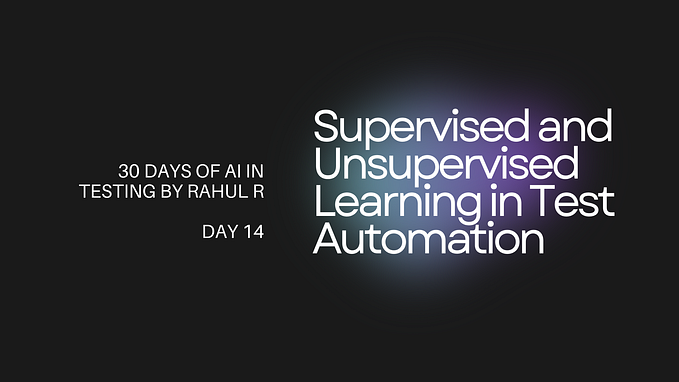
Test Automation Best Practices
Testing is difficult when dealing with a complex software framework. Ineffective testing and weak product insights can cost a lot of money . An unauthorized piece of software can damage your company’s reputation. Until putting the device online for clients and customers, product owners must invest in sufficient testing.
Tips for Automated Testing
A software product’s success depends on rigorous testing. Most people won’t purchase or use your programme if it doesn’t work properly, at least not for a long time. However, finding defects or bugs is time-consuming, costly, repetitive, and prone to human error. Automated testing, in which Quality Assurance teams use software tools to run comprehensive, repetitive, and data-intensive tests automatically aid teams in improving software quality and maximizing their testing resources.
Having access to the right, professional testers to build and manage automation scripts is one of the big obstacles in test automation. In addition, developing an automation system necessitates a substantial expenditure of time and money.
The following is a list of test automation best practices that you can use to improve the efficiency of your testing process:
- Realize the App and Decide what to Automate
Only automate features that have stabilized and are likely to remain unaffected. For repetitive tests that must be run with each update such as regression cases, automation test scripts should ideally be written. Smoke tests and build acceptance tests are two common tests that can be automated. Manually performing these tests takes a long time and is challenging. The aim is to make it simpler for manual testers to concentrate on ways to increase the quality of the product by simplifying repetitive activities.
Consequently, don’t try to automate anything because it takes a lot of time and money to not only set up but also to manage the system. Determine essential workflows based on the threats that have been evaluated. Only automate workflows that do not require a complex checking framework or manual analysis. A thorough understanding of your app would also help in the selection of the best automation framework.
- Select the Right Automated Testing Tool
In order to automate tests, you must first select an automated testing framework. There are numerous automated testing tools on the market, and it is critical to choose the one that better matches your overall requirements.
When choosing an automated testing method, keep the following points in mind:
- Your platforms and technologies will be supported. Are you putting yourself to the test? What operating systems do you want to run your .Net, C#, or WPF applications on? Will you be testing mobile applications? Do you want assistance with mobile device testing? Do you deal with Android or iOS, or do you have experience with both?
- Testers of all ability levels will benefit from the versatility. Is keyword testing necessary or can your QA department write automated test scripts?
- Automated tests are simple to build and have a lot of features. Is there a function for enforcing checkpoints to validate values, records, or the main functionality of your application? Does the test automation tool support both record-and-playback tests and manual test creation?
- Incorporate into the ecosystem you already have. Is your tool compatible with your continuous integration and delivery pipeline, such as Jenkins or Azure DevOps? Or maybe a test management system like Zephyr? Consider using a defect-management system like Jira or a source control system like Git.
- Testing business software is feasible. Is your tool ready to test bundled applications like SAP, Oracle, Salesforce, and Workday right out of the box?
- Incorporate manual and automated research into the framework
The development of good manual test cases is the first step in good test automation. In the automation process, provide provisions for manual testing and the development of successful test cases. Using manual testing to build and execute successful test designs that can be automated is a good idea. Each test case should be self-contained and independent of the others. These test cases should be run manually to find bugs prior to writing automation scripts and they should also be used to finalise workflows. Test cases that aren’t compliant with the software should be validated and removed. This method of manually listing and checking all possibilities assists in evaluating the reach of automation.
- Create reusable and maintainable automated tests
Changes in the tests must be supported by a good automation framework. Consider the application’s potential future changes as you build the framework. Adopt a method for developing modular scripts that are less reliant on each other.
- Create useful test data
It’s easier to build and run automation scripts with well-structured test data. It’s much easier to keep track of and reuse high-quality test results. The automation system should be data-driven and allow for data input in a variety of formats. This reduces the amount of time it takes to run data-driven experiments. As the product matures, it also makes writing automation scripts simpler.
- Create Automated Tests That Are Resistant to Changes in the UI
The application under test affects automated tests generated with scripts or keyword tests. The application’s user interface can change between builds, particularly in the early stages. These adjustments can have an effect on test results, or the automated tests may stop working for future versions of the programme. The issue is that automated testing tools define and locate an object using a set of properties. A testing tool can use position coordinates to locate an item. If, for example, the control caption or location has been modified, the automatic test will be unable to locate the object and will fail. Before running the automated test against the latest version of the application, you will need to substitute old names with new ones in the entire project. Providing unique names for your controls, on the other hand, makes the automated tests immune to these UI changes and ensures that they continue to function without requiring changes to the test itself. This also removes the automated testing tool’s dependence on position coordinates to locate the control, which is less reliable and prone to failure.
- Aim for a faster turnaround time
Companies may use crowdsourced testing tools to help them build and execute automation scripts faster. Clients can use crowd testing tools to get access to an on-demand and professional QA team that can help them achieve full automation coverage faster. The shorter the time it takes to get results, the more frequently and quickly you will conduct tests. Developers would be able to get quicker feedback and correct all regression bugs as a result of faster execution.
Conclusion
As a result, automation is critical to the success of a software development project. Careful preparation and investment in testing and automation tools will reduce the risk of poor app quality, speed up product release and increase the productivity of QA teams. Testers can focus on manual testing, developers can focus on creativity and businesses can confidently release high-quality tech products quicker with the right automation testing strategy in place.
The road to effective test automation implementation is outlined in this article’s best practices. A variety of services TestDel assist you in adhering to these best practices:
- You may use TestDel to conduct various forms of software testing.
- You can divide your test into individual test pieces, called test objects, and arrange them in a tree-like structure . It allows you to use individual tests repeatedly and in a specific order.
- Keyword-driven testing is executed by TestDel. These automated tests are simple to build for inexperienced client users or when a fast test is needed.
Using TestDel’s automation QA services and adapting recommended best practices will help you avoid common mistakes and improve your automated testing process. This allows you to test items more quickly, save money, and meet deadlines. We create well-structured test automation frameworks to increase your team’s efficiency by maximizing test coverage, and decreasing costs and maintenance giving you a higher return on investment. We uses VBScript, JavaScript, Python, C++, C#, and Java scripting languages developing automated test scripts.









